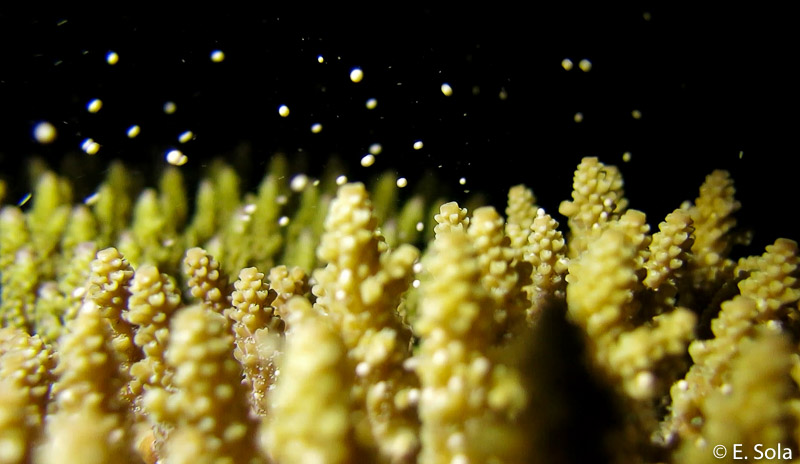If your first image of Africa isn’t white sand beaches and jaw dropping coral reefs, you’ve probably never been to Mozambique, and the Quirimbas Archipelago is no exception with beaches and reefs as far as the eye can see.
The Quirimbas is a group of 32 islands reaching up to Mozambique’s northern border with Tanzania. Just beyond the coastal islands lies a barrier reef and a steep continental shelf, making for some stunning wall dives and lots of unexplored terrain. The Islands range from small uninhabited palm shaded beaches, to larger inhabited islands like Vamizi, Matemo and Ibo island.

Nearing the Northern border of the Archipelago on the island of Vamizi, Mozambican marine biologist Erwan Sola has been studying the annual coral mass spawning for three years. Erwan is based at the University of KwaZulu-Natal, South Africa and he collaborates with Dr. David Glassom, Isabel da Silva from the Universidade do Lurio in Pemba Mozambique and Joana Trindade at Vamizi Island.
Erwan’s previous study showed that over 15 species of Acropora spawn contribute to Vamizi’s annual coral mass spawning, including Acropora austera, Acropora gemmifera and Acropora nasuta, and this year’s monitoring is revealing new information on the event. For instance, many species other than Acropora and even some soft corals are likely to spawn around this time too, as infered from the observation of spawnslicks out of the peak and eggs inside soft coral Xenia sp.
Last year as part of his PhD research on coral spawning along the Mozambican coastline, Erwan was able to pin down the exact dates of the annual spawn September 16th 2014. This year Erwan and the team from the Vamizi Island Marine Conservation Research Center had a front row seat when the annual spawned happened September 6th, 2015.
When we first started writing about this story Erwan says he was “expecting this year to be a split-spawning year, so there should be some more action soon”, and it sure did! Last night October 4th 2015 the corals of Vamizi island spawned for a second time.

It is really special to see how synchronized corals can become, last month SECORE reported a late elkhorn coral spawning at Curacao on September 8th 2015. While Erwan will try to get a bigger picture of coral spawning along the Mozambican coastline, we at Reef Builders find it interesting to connect the dots showing how corals from Curacao and Mozambique half way across the globe in alternate hemispheres are spawning together!
Erwan’s research has included tagging individual corals from six Acropora species to follow gamete maturation throughout the year. He has found that as expected, each coral matures gametes at most once a year, culminating in a synchronized release within and between species. Although some individual colonies also seem to skip a year.

In parallel to his research and as a way to help preserve the reefs of Vamizi, Erwan has also set up a small test project looking at coral resilience among common coral species found around Vamizi Island. Instead of being discarded, branches of corals sampled during the research were secured to frames, simply to test how well the would recover. They are doing fine so far and have even showed a slight regrowth in just three months. The resilience project includes seven Acropora species, two Pocillopora and one Isopora.

Erwan also noted that, “in the light of the major offshore natural gas mining operation soon to bloom in the Quirimbas, continuous research effort to produce baselines and better understand the natural resilience of these reefs is essential. By protecting the crucial natural process of sexual reproduction, we can help the reefs help themselves to persist in the longer-term.”



